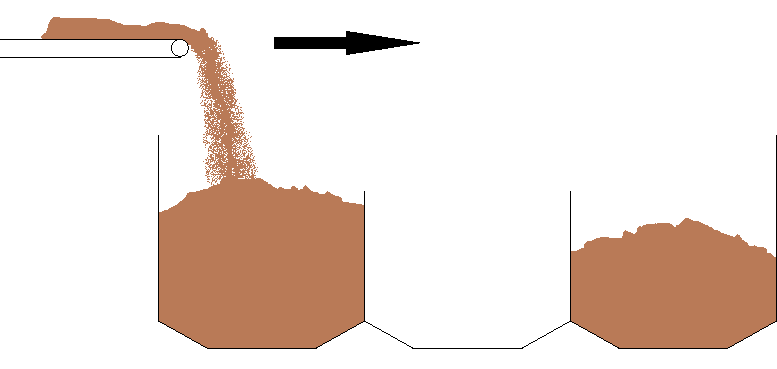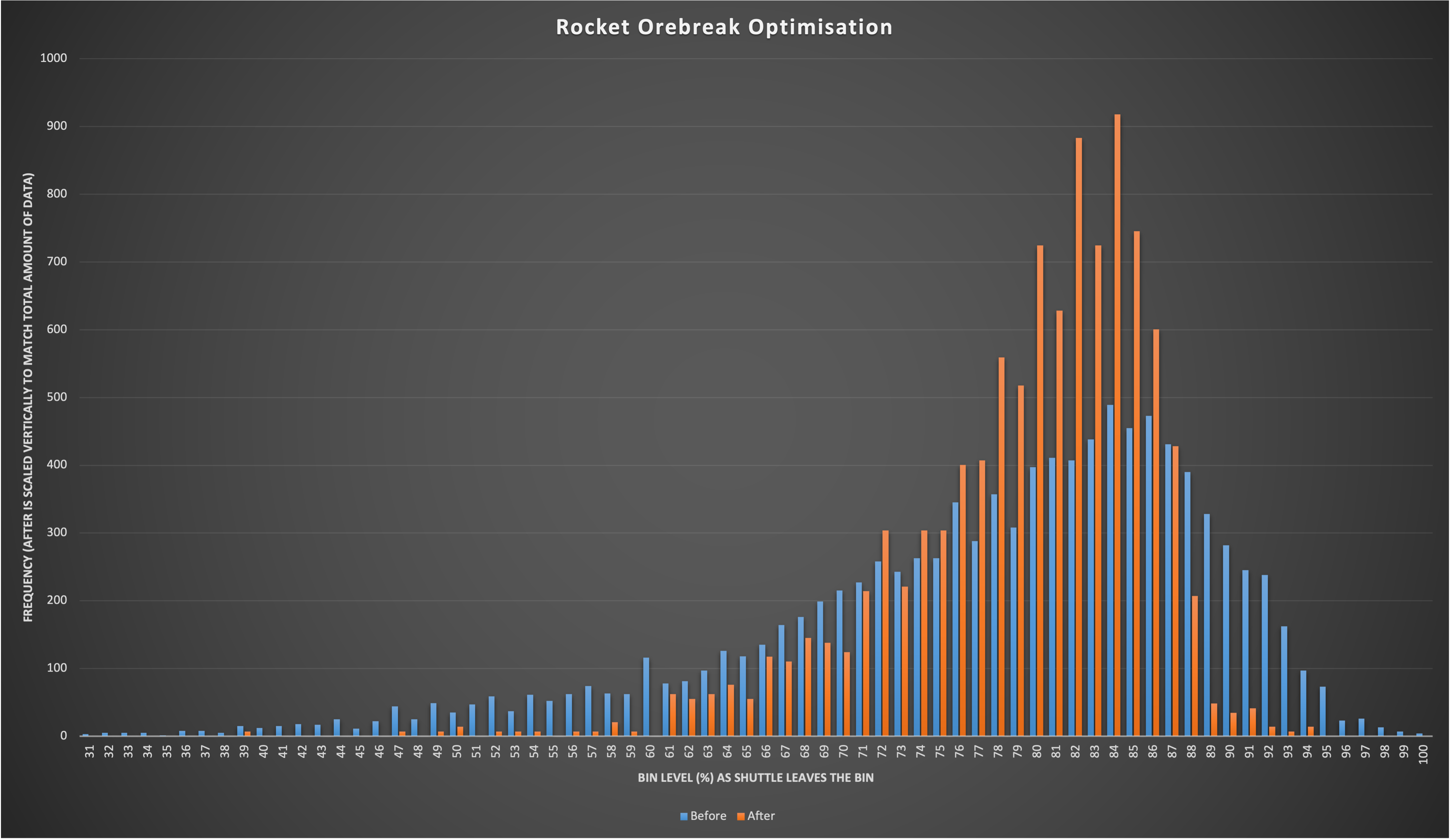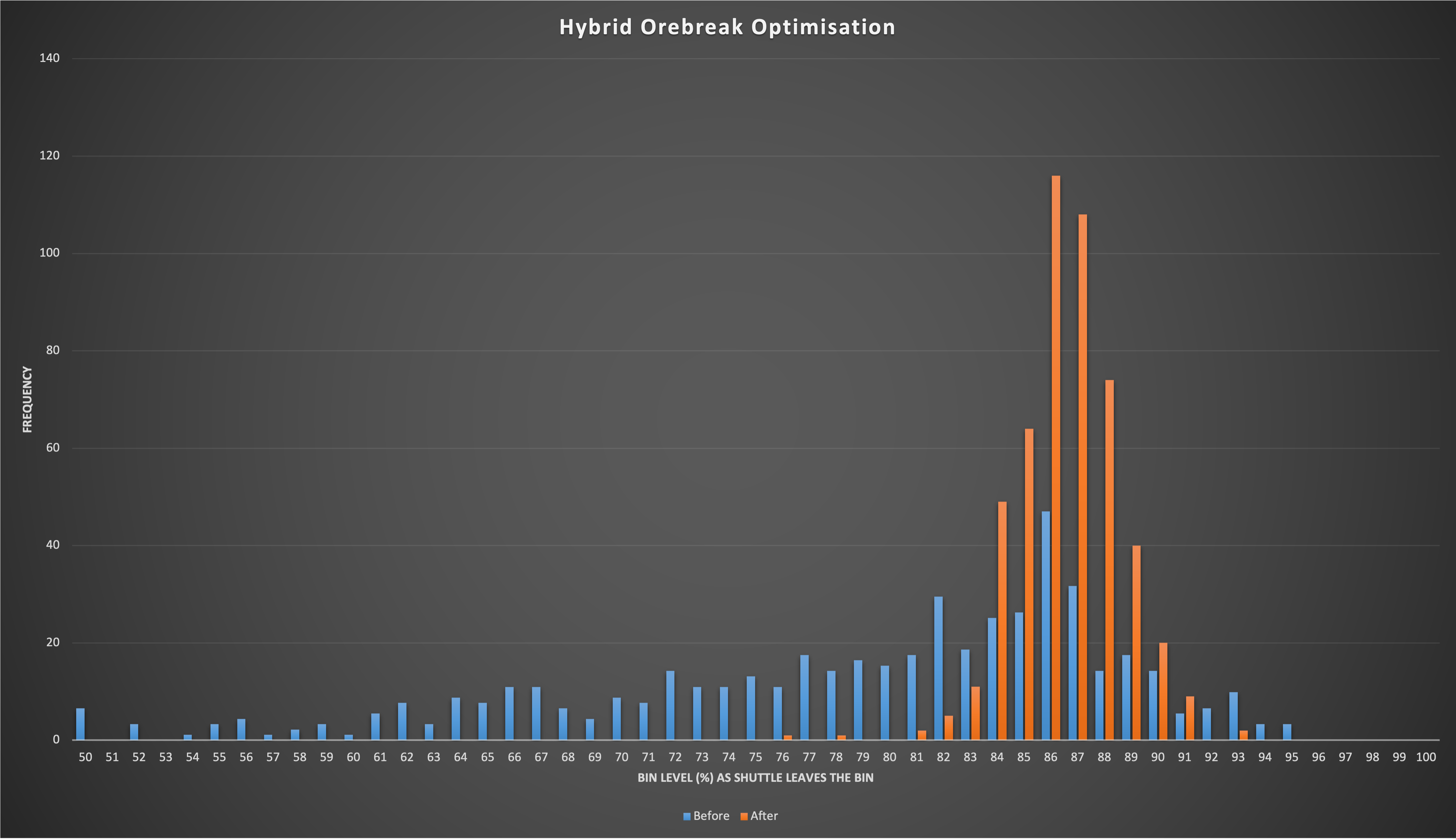During maintenance periods of an ore scrubbing circuit, ore needs to not be added to that circuit’s feed bin. To facilitate this, ore gaps need to be planned in for when the shuttle will move over this unused bin.
The orebreak needs to be planned ahead of time as the feed sources are up to a few minutes upstream of the bins. This requires calculations to be done to predict when a bin will be filled to the required level.
There is a production cost in getting the prediction wrong as under-filling the bin will mean a scrubber runs out of feed before the bin can be filled again. Overfilling a bin is even worse as it will trigger the high level protections and trip all the feed to the plant.
Algorithms were developed to improve the prediction capability of orebreak planning. Online adaptive algorithms were incorporated to react to changes in ore to avoid regular process control tuning and support requirements.



